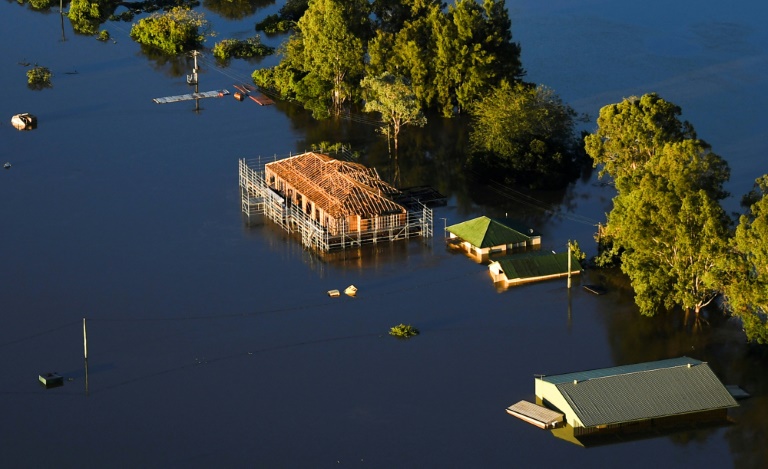
Rescue teams raced emergency supplies to flood-hit Australians Wednesday, as trapped residents waited for still-swollen rivers to ebb, so the long, hard clean-up can begin.
Eight million people in Australia's most populous state New South Wales woke to brilliant blue skies for the first time in a week, as a torrential downpour that has been dubbed the "Big Wet" finally ceased.
But across the vast flood zone thousands of homes and other properties remained underwater, many communities were still isolated and police reported the first fatality linked to the disaster.
Police said they discovered the remains of a man trapped in his car in floodwaters in Sydney's northwest. He was not immediately identified.
Since the flooding began last week, emergency services have responded to more than 11,000 calls for help, rescuing at least 950 people from floodwaters.
But the focus has now shifted to ferrying in food, medical supplies and other essentials and transporting out those in urgent need.
Among them was 56-year-old Di Smith, who hours after receiving a cancer diagnosis needed to reach a hospital.
She was on her farm northwest of Sydney with a pig, a goat, chickens, six alpacas and a handful of dogs when the floods hit earlier in the week.
Three bridges were washed out and a landslide blocked the main road out. "There's thousands of people over there isolated," she told AFP.
She was ferried out by the State Emergency Service. "I'd have been absolutely lost without them," she said. "They're all volunteers, absolutely amazing."
Sixty-year-old Father John Rizzo had been administering rites to a heart patient in the mountains when he became stuck.
"The damage is horrific," he said. "Even where the river isn't influencing anything, you have a lot of water that has run off the mountain, quite a few landslips and debris all over the road."
"Finally today SES was able to get me across the river."
'Massive clean-up'
Prime Minister Scott Morrison, who toured affected areas near Sydney by helicopter Wednesday morning, told local radio he had witnessed an "expanse of water" and "homes that are totally subsumed".
He warned of a "massive clean-up task" ahead, saying the government had already made 10,000 disaster recovery payments to residents.
State Premier Gladys Berejiklian said the flooding in some regions had been the worst in a century, with tens of thousands fleeing their homes, and thousands more remaining on evacuation alert.
Many rivers have stabilised or begun to slowly recede, but water levels are not expected to substantially change until Saturday.
Ailsa Jones said there was a "crazy" lack of supplies in Wheeny Creek, northwest of the city, with no essentials available in supermarkets since Sunday.
"Any shop is just stripped bare. It's horrible," she told public broadcaster ABC.
"We're just on spaghetti and two-minute noodles. I'm rationing the kids out just to make sure that it lasts."
Thousands are still without power and energy providers have warned electricity will not be restored in the worst-affected areas until later in the week.
Wild weather and flooding also hit outback areas of New South Wales on Tuesday and even extended into built-up parts of Queensland state to the north.
"We're certainly not out of the woods in terms of the immediate flood danger, but we have to turn our minds to how we start the clean-up and the recovery," Berejiklian said.
The government said hundreds of troops would be deployed from Thursday to support the efforts.
"Their job will be out there cleaning up, making sure that we get rid of the debris... making it easier for those who are going through the recovery process," emergency management minister David Littleproud said.
Thousands of homes and businesses have been damaged, with insurers receiving more than 17,000 claims and many more expected.
Some coastal regions have received a metre (three feet) of water in a week, the equivalent of two-thirds of normal annual rainfall.
Many are still reeling from a prolonged drought and unprecedented bushfires just over a year ago.
Scientists have warned Australia can expect more frequent and more extreme weather events as a result of climate change.